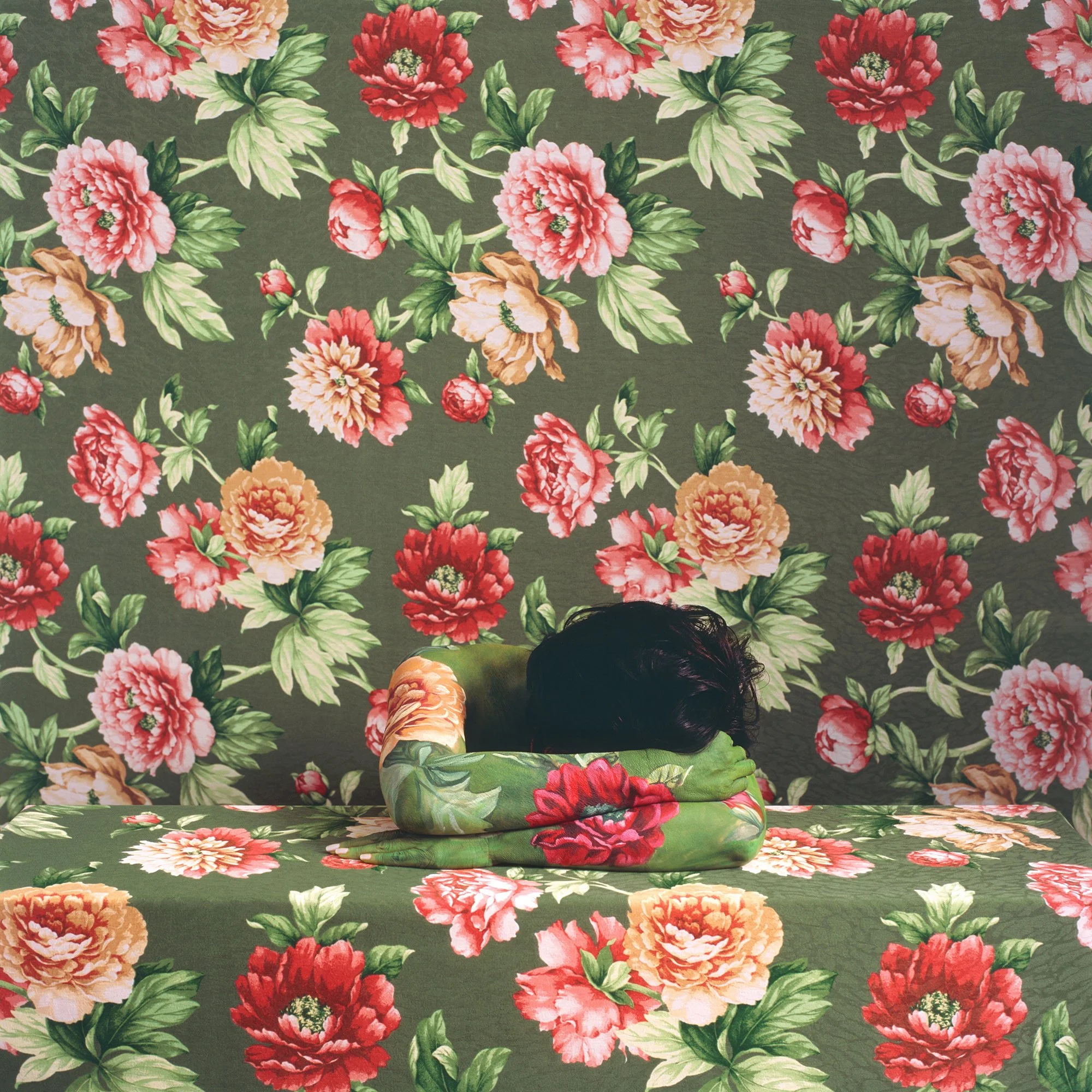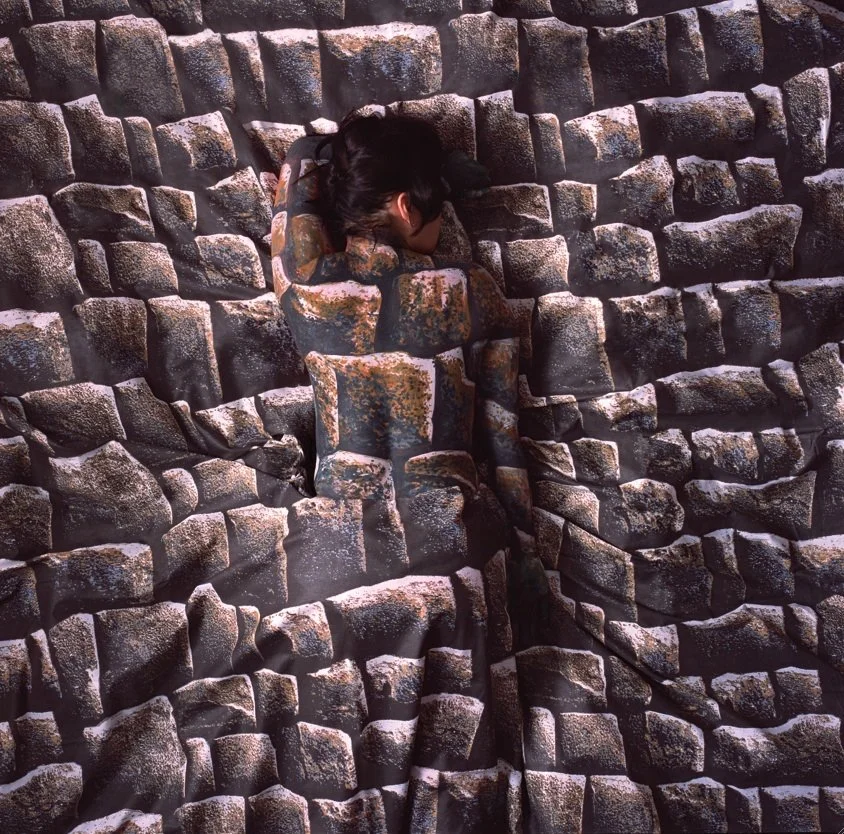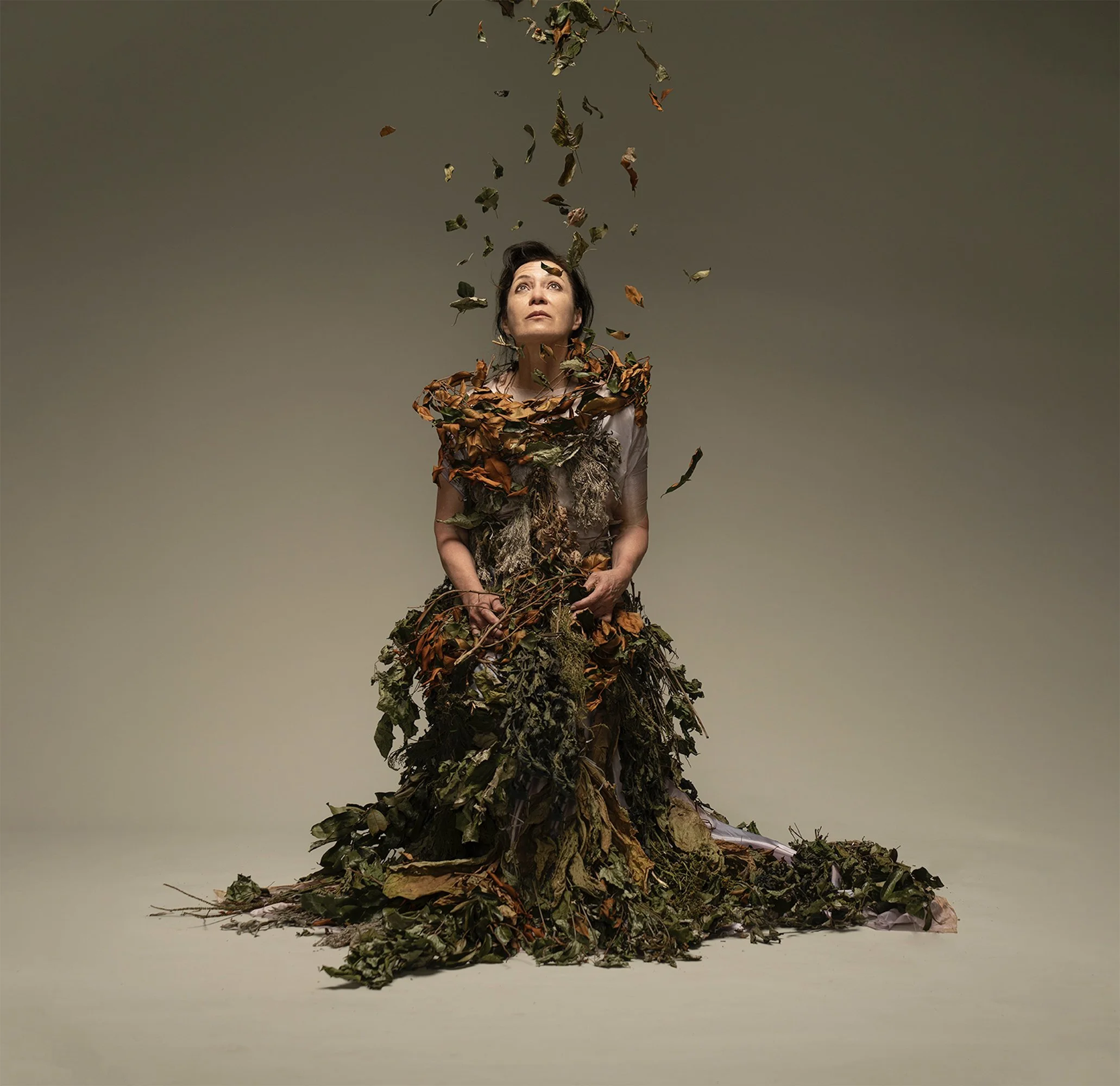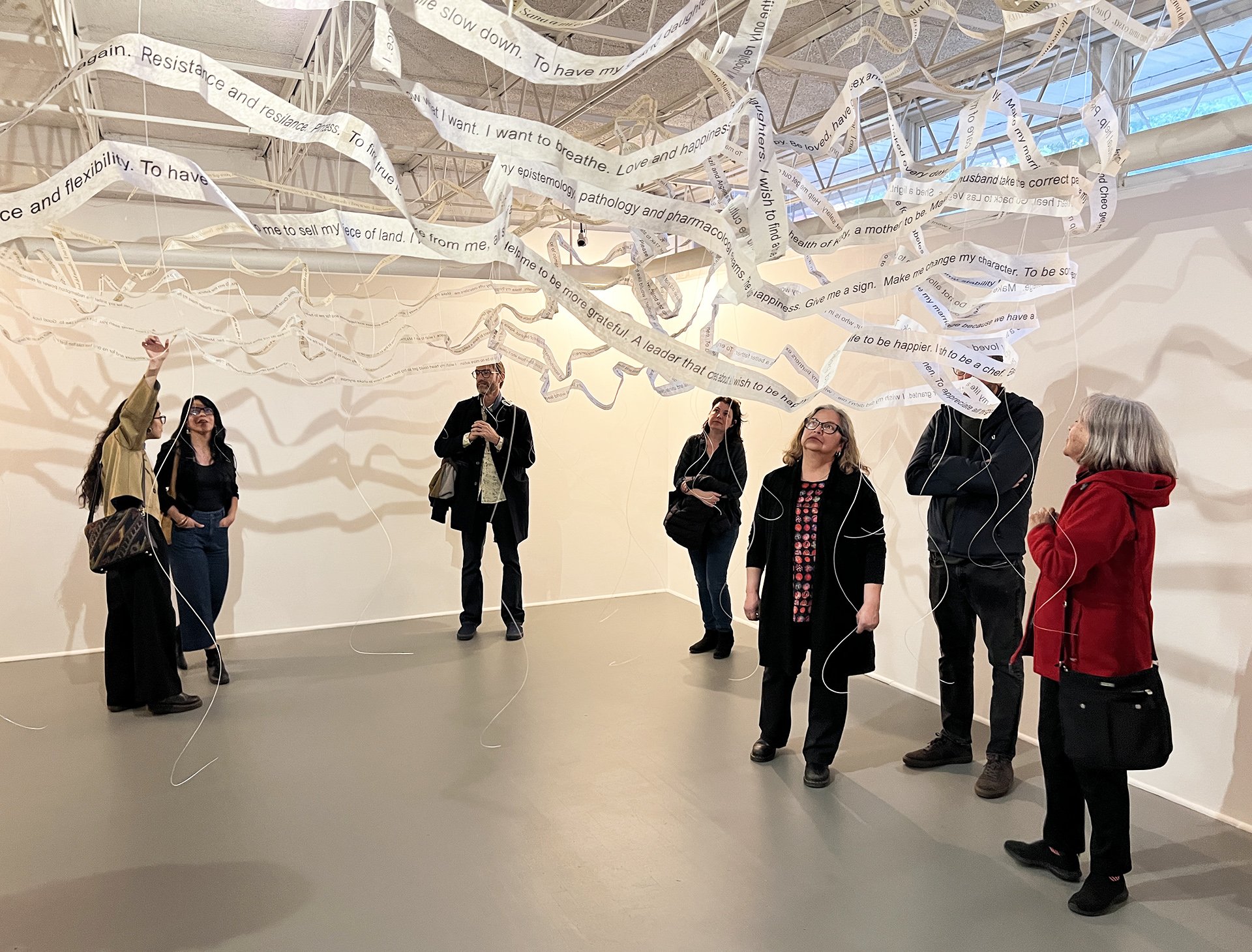To Be Seen Without Vanishing: Cecilia Paredes at The Print Center
Philadelphia keeps certain treasures a step away from the main street, as if they prefer listeners to passersby. The Print Center lives in one of those quiet places, a historic carriage house near Rittenhouse Square where paper hums and light studies the walls. Founded in 1915 as The Print Club and renamed in 1996, the Center advances printmaking and photography through exhibitions, education, and books. The address is modest. The ambition is not.
The exhibition is Cecilia Paredes: By my side or back of me. It ran from April 18 to July 19, 2025, the artist’s Philadelphia debut. Two currents meet inside the show. On the walls, downstairs, performative photographic self-portraits where the body courts disappearance inside pattern. Upstairs, a floating sculpture built from wishes gathered from visitors and post-industrial and the self. I and we, set in motion by looking.
Paredes is a patient magician. The trick is simple to state and exacting to execute. She paints and dresses the body to echo elaborate grounds, then asks the camera to decide how far resemblance can go. In one photograph the figure folds over a field of roses, head down, back a bloom among blooms. Beauty rises first, then the thought behind it. Camouflage reads as shelter, and also as risk. How much can I match and remain myself. Where does protection end and erasure begin. The eye keeps searching for the seam and finds it in a shoulder, a curl of hair, a wrinkle that refuses to align. Presence whispers. It does not vanish.
Dreaming Rose
A close view gives another lesson. Crossed forearms lie on a dark floral textile. Veins become vines. Petals migrate from cloth to skin and back again. It is quiet work, almost devotional. Your attention slows to meet it. The photographs undo the neat split between nature and the manmade. Pattern is not just decoration. It is a second skin that insists on touch, labor, memory. The figure looks back and the room turns into a place for negotiation. Identity is not a badge you put on in the morning. It is a daily treaty with what surrounds you.
Then a stone wall arrives. The body presses into oversized cobbles, paint and fabric echoing grit and frost. The illusion holds until the fabric buckles, and at that buckle the person steps forward again. I kept reading those small ruptures as acts of care. A pattern that fits too perfectly begins to swallow its wearer. A pattern that breaks a little leaves room for breath.
History
Climb the narrow stair and the temperature shifts. The upstairs rooms carry the post‑industrial works, where cloth and labor and the afterlife of factories provide the ground. In Weaver with Plant, a solitary figure faces a vast, idle loom in a decayed mill. The gown reads like unspooled fiber. Dust holds the light. The machine occupies most of the frame. The imbalance is deliberate. The photograph honors the scale of industry and refuses to lose the human scale within it. Attention becomes a kind of work.
Weaver with Plant
The Witness extends the thought. Columns march toward a bright vanishing point. The ceiling is an atlas of pipes and flaking panels. Tiles are scattered like old shingles across the floor. In the middle distance a body stands small and steady. The ruin does not overwhelm. It is measured by a gaze that will not look away.
The Witness
In The Encounter, nature has already crossed the threshold. A shallow pool gathers the sky. Moss claims the concrete. Seedlings try their luck. The figure kneels, draped in green, holding a thin branch as if taking the place’s pulse. The action is quiet. The commitment is not. The photograph suggests a method for living in damaged rooms. Kneel. Look. Begin where the living begins again.
The Encounter
Wisdom condenses the upstairs mood into an emblem. A sculptural dress made of dried leaves rustles in a studio. Loose leaves fall from above. The face turns upward with calm intent. Seasons have been stitched into a garment. Time becomes material you can wear. I read it as a promise. Salvage can be art. Decay can feed form.
Wisdom
Across the staircase the show opens into Wishes, a suspended canopy of ribbon‑like strips printed with sentences gathered from the public. The sculpture drifts overhead and throws a second drawing in shadow along the walls and floor. Visitors walk through it with their heads tilted, reading. The statements glint in many languages. A desire for health. A plea for peace. A hope for work, a visa, a chance to study, a life that does not pinch. I thought of a city thinking out loud. The piece is tender without sugar. Each line belongs to someone. Together they shape weather.
Wishes
The Center’s rooms help all this unfold. Their scale is human. You can stand nose close to a print, step back into a clearing, then walk under the canopy of sentences. The exhibition never bangs the drum. It paces the conversation so the works answer one another. Camouflage in one gallery, care in the next. Portraits of self, then a chorus of wishes. It reads like a score for the act of seeing.
The people matter too. I was welcomed by Miosotis Negrón, Assistant to the Director, whose clarity set the tone. After the visit she introduced me to Elizabeth F. Spungen, Executive Director. We continued the conversation by email and this is how this review came to exist. Mikaela Hawk, Development and Communications Manager, gave me orientation to the Center’s programs and publications and provided me with the images that I include here. And Lauren Rosenblum, Jensen Bryan Curator, swimming through a grant application—what makes things possible—emerged for a gulp of air and sent me a message of hope and encouragement.
That chain of attention mirrors the show. Individual voices held within a larger fabric.
Context deepens the pleasure. The Print Center has spent more than a century showing how prints and photographs think. The names across its history are a long river, from early masters to artists who reinvent the medium right now. The point is not prestige. The point is continuity of care. Paredes enters that river as argument and presence. She gives Philadelphia images that slow the pulse and a method for reading the surfaces that dress us.
Books extend the conversation beyond the galleries. The Center’s publications are not souvenirs. They are rooms you can carry. Recent titles have traced survival, community, and the social lives of pictures. I like knowing that the memory of this show will travel in print to other rooms and readers. That feels right for a house that has protected the printed image for so long.
What does the exhibition offer in this year of ours. A way to stand in a pattern and still be seen. A way to walk through the wishes of strangers and feel responsible for them. A way to greet ruin without melodrama, then kneel by the puddle where the first green returns. Paredes shows how a person can both merge and insist. The Print Center gives that lesson the right rooms and the right company.
I left with a line that keeps repeating. To disappear is one kind of power. To be present without shouting is another. The show chooses the second. It asks us to look carefully and answer with care of our own. Seeing becomes a civic act. Beauty becomes a tool for belonging.
Jorge R. G. Sagastume
Editor-in-Chief, The Pasticheur
(This contribution was made possible, in part, because of a generous grant from Dickinson College’s R&D Committee.)







